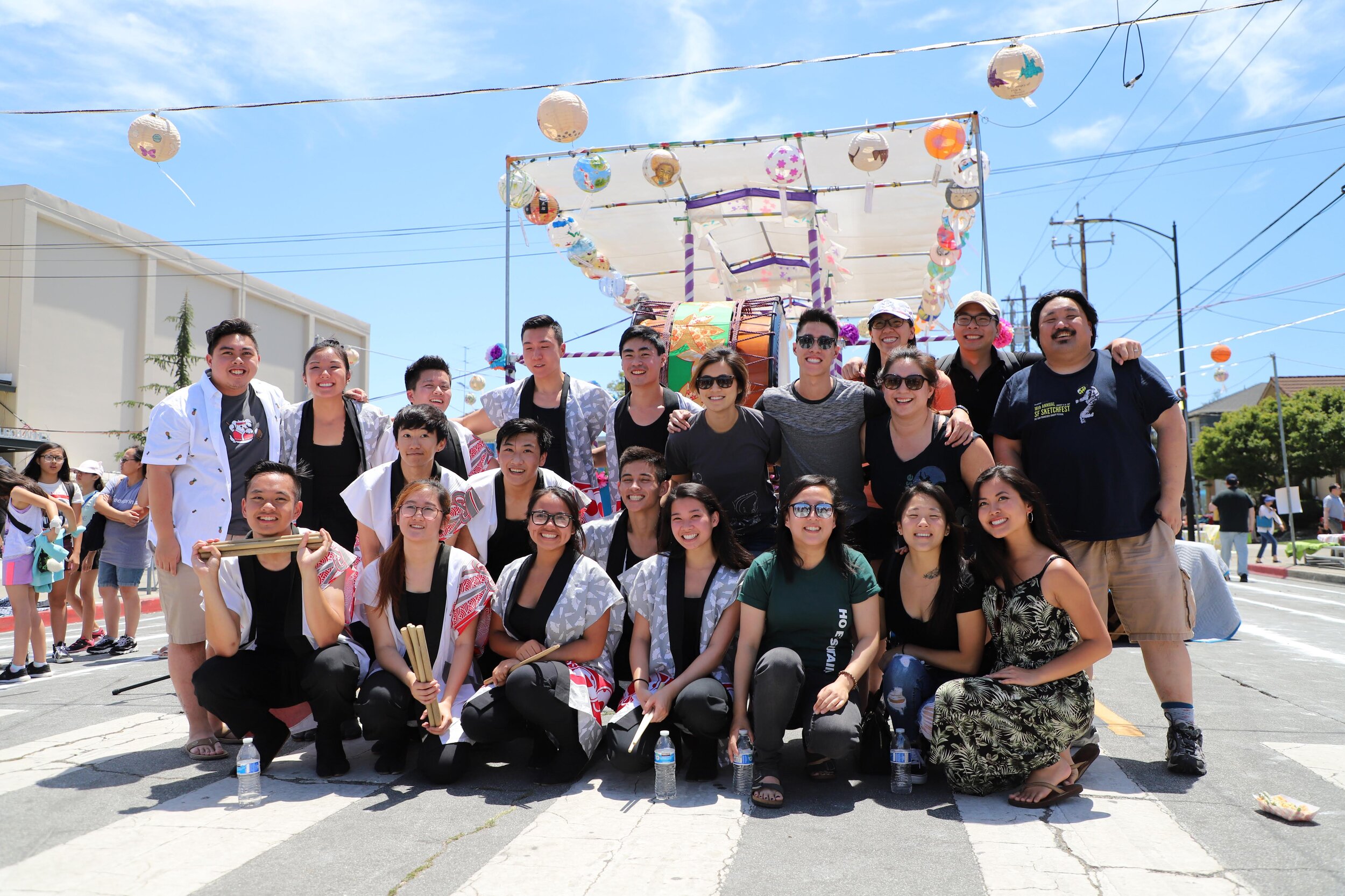One Big Circle
BY VICKY PHAN
“If there was ever an earnest call for peace, unity, and joy, “Ei Ja Nai Ka” is it.”
It was the summer of 2009. I had just finished my second year of college, and--more importantly to me at the time—my first year ever playing taiko.
FINDING MY PEOPLE
Once classes had ended for the year, it was impossible to imagine tearing myself away from the rush of taiko drumming, which had become the center of my life. It had been hard for me to make good friends when I’d first started college; but after joining taiko, it had felt like I’d finally found “my people,” and putting the momentum on pause just because school was done felt gut-wrenching. So, that summer, even though I knew very little about Japanese festivals, I knew I wanted to join my friends to watch San Jose Taiko perform at San Jose Obon.
I was born and raised in San Jose. Japantown, with its restaurants, trinket shops, and the church where my parents got married, had always danced along the edges of my childhood experience. That summer, as friends began to arrive at my house with dishes to bring to San Jose Taiko’s annual Obon Potluck, I saw my new and old lives start to collide and blend together, as if fated to join hands. The anticipation of what waited ahead filled me with energy.
GROWING MY CIRCLE
We set out for the San Jose Taiko studio. As soon as we stepped inside, I felt my world grow instantly larger. Whereas before that moment in time, my sense of “community” had been mostly just my friends at school, that circle suddenly grew to include peers from other collegiate taiko groups, professional players I looked up to, and—incredibly—two of the pioneers, Roy and PJ Hirabayashi, who had helped spread taiko in North America.
Even being in the same space as all of these taiko players was surreal. It was a room full of all sorts of people with different origins, ages, backgrounds, and stories.
What brought us all together was PJ’s "Ei Ja Nai Ka."
Back then, the idea of obon dancing was new to me. But the experience of quickly overcoming “outsider” discomfort, learning simple but symbolically impactful movements, and sharing a universally clumsy but joyful chant with completely new people cemented the feeling of Family within my spirit. Any lingering emotional walls dissipated immediately, as San Jose Taiko members and obon veterans taught us all the moves, and we learned when and what to shout with all our might. The feeling of solidarity was infectious.
LEARNING COMMUNITY WITH EI JA NAI KA
I left that potluck feeling as though my heart were as full as it could ever be. But later that weekend, as I danced and sang "Ei Ja Nai Ka" in harmony with hundreds of people in Japantown, my heart grew even fuller. I realized that I’d learned Community in a way that I hadn’t anticipated. I suddenly understood that I was a part of a much bigger whole--a whole that had been present my entire life, but that I was only now starting to consciously process and embrace.
“The feeling of solidarity was infectious.”
That summer of 2009, I’d only recently learned that San Jose Taiko existed, and I was in awe at even being in the same room as PJ. Years later, my journey came full circle as I returned to SJ Obon as a new member of San Jose Taiko, and found myself standing at the front of that same studio with PJ, teaching her choreography to a whole new generation of taiko players, a decade after I’d discovered the magic. It was almost more surreal than the first time I’d learned it, and my heart grew even fuller, still.
SECOND NATURE
Today, many, many San Jose Obon festivals later, the song and dance of "Ei Ja Nai Ka" come as second nature to me. I’ve probably heard it a hundred times by now, but I still feel this as strongly now as I did back then: If there was ever an earnest call for peace, unity, and joy, "Ei Ja Nai Ka" is it. Anyone who has ever met PJ Hirabayashi knows that she is a crucial, inimitable connection between reverence for our past and drive toward our future. Her love, soul, and determination live within the drum’s vibrations and the dance’s steps and twirls. PJ’s heart has been carried through this song to celebrations, gatherings, and conferences around the world.
““Ei Ja Nai Ka” has become even more of a beacon in recent times. As the nation fights to regain a hold on camaraderie, understanding, and respect, this song continues to tell the story of past ancestors while engaging new generations, as well.”
PAYING IT FORWARD
Though it has always carried a special light, I feel "Ei Ja Nai Ka" has become even more of a beacon in recent times. As the nation fights to regain a hold on camaraderie, understanding, and respect, this song continues to tell the story of past ancestors while engaging new generations, as well. It pulls together singers, dancers, and celebrators of all walks of life, and seeks to weave together the common threads of all our experiences, so that we can move forward as one Community. That is the power of "Ei Ja Nai Ka," which I will always carry with me. And I will continue to pay that forward, the way PJ and generations past have done for me.
ABOUT THE AUTHOR
Vicky Phan began her taiko journey in 2008 with UCSD's Asayake Taiko, and continued playing after graduation with Naruwan Taiko of San Diego. She is proud to contribute to the unique multicultural arts scene of her hometown, San Jose, CA, as a current performing member of San Jose Taiko, and balances her full-time tech job with drumming, drawing, traveling (pre-COVID), and hanging out with her less-than-enthused cats.





